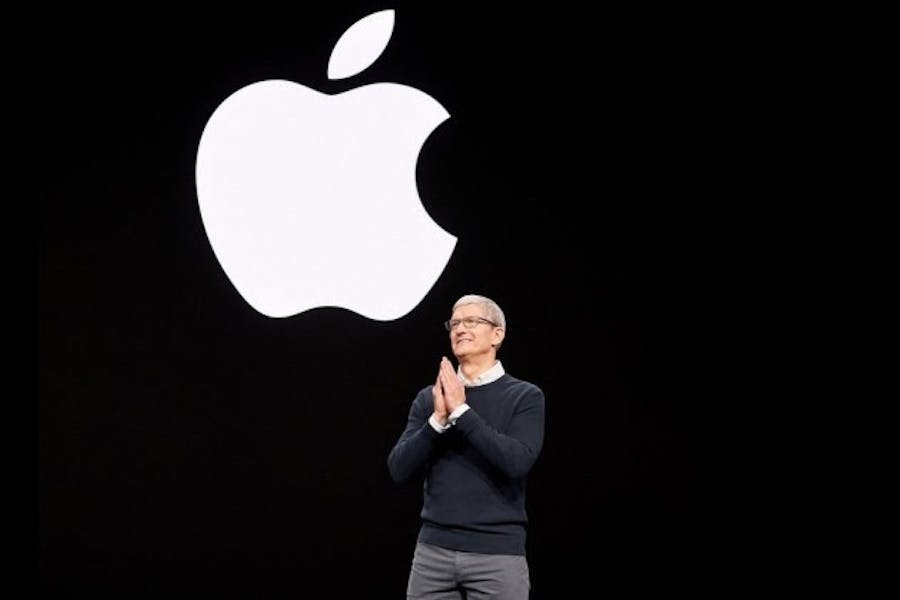The success of a brand's communication, as well as the success of its corporate culture, is measured by the breadth of its traditions: Here, Apple events present a fairly well-structured scheme that you can duplicate for corporate events:
- The event announcement
- The wait
- The show, which raises expectations
- The results
Step 1: The event announcement
Every year the keynote announcement of the iPhone launch takes place in the fall. Apple also sometimes holds another thematic keynote in the spring.
In 2019, from the event announcement to the holding of the conference, the Cupertino firm lets rumors run rampant to create high expectations and suspense around the brand's new products. That year the invitations were sent out with an iconic description of the event: "it's showtime." More than an invitation, a promise, and above all a stimulus for the imagination!
The experience that the guests will get out of it is not mentioned, no program is announced. We tease to the very subject of the conference! A small downside for those who would like to draw inspiration from Apple's tactics, as only brands with sufficient authority and fame can afford these masterstrokes.

Step 2: Waiting in crescendo for the event
While waiting, the public speculates since they have no program on the conference (which feeds the web with blog and news articles, further increasing notoriety, while leaks and rumors of influencers circulate).
And in this case, the invitation is a clue about the event itself. Specialized sites as well as the general press have started to decipher weak signals and build conjectures. Is the firm getting ready to compete with Amazon and Netflix in the field of streaming content? Why this guest list from the entertainment world?
Step 3: The show as a product of the event
At first, the event itself resembles a classic financial communication exercise. The company presents figures related to its various services. At the end of this presentation, the brand offers satisfaction: an advertisement. This announcement is made with the help of celebrities (including Steven Spielberg).
Some very good ideas that the label's inmates will hate but which are effective. Usually, the speaker is announced. But after 1h38 Tim Cook disappears. Music is played in the background, a picture is briefly displayed on the screen. And then Oprah Winfrey appears in the light. Many members of the audience stand up. All the ingredients of the show are there; the teasing has worked. Exactly like the announcement of the very first iPhone, remember :
To summarize, the object of the expected event was an announcement, which itself produces expectation. This announcement is not followed by a date. We will have to wait until the fall to have details about the launch of Apple's streaming offer.
There were a lot of photos, presentations of the general orientations of the service and of the invited artists. But nothing else. If the public (the final customer) sometimes seems confused, the press is delighted. And that was indeed the objective of this conference and Apple's masterstroke: To increase the notoriety of a service that is not even present yet and to create expectations about this service.
Step 4: Conference results and lessons learned
The lessons of Apple keynotes are numerous. An excellent video on this subject has been made by Tech Insider: The first thing to remember is that the event here is only valuable because it is repeated.
We will note here Apple's deliberate choice not to communicate more even after the event in order to create expectations before but also after the event itself, in order to contribute to the media hype.
But for the audience of professionals present that day, they were able to leave with the feeling that they were witnessing a real Apple show experience, much more than just a list of technical specifications.
Here the bet is successful since every year the press waits for Apple, even if the brand's products have come under criticism in the last few years. Even Apple's smallest release will gain them an immense amount of press notoriety (fed by events) that guarantees the brand's durability.
This type of event allows acquiring new customers, not only for Apple's new streaming feature but also the general expansion of the authority of Apple's brand image. A PR move like this also improves customer loyalty: Users are proud to be customers of a brand that makes such a splash and has enough charisma to unleash the web without having announced any theme. The ROI of this type of conference is measured in brand awareness and brand loyalty, two areas where Apple already needs no help.
Apple, therefore, has such a powerful branding because for decades they have been able to systematically provoke expectation of the unexpected, and go against what is already being done: In the case of the Apple brand, we can really talk about a company recognized for its pioneering spirit. Here the case is concrete: communication serves marketing and vice versa.
What lessons can we learn from this Apple case?
At Apple, the event ceremony is very simple and associated with the image of the brand. Apple has succeeded in teasing an event that announces a new chapter and a new business unit of the brand.
The thing to remember here is that like Apple, make your event much more than an announcement, much more than an event: Make it an experience.
Don't hesitate to create a streamlined invitation, to add mystery and teasing around the event, to invite the press if possible... You can also use this type of framework on other types of events: Awesome company seminars to thank employees for example.
In an event, never forget that success is measured by the way you communicate beforehand.



